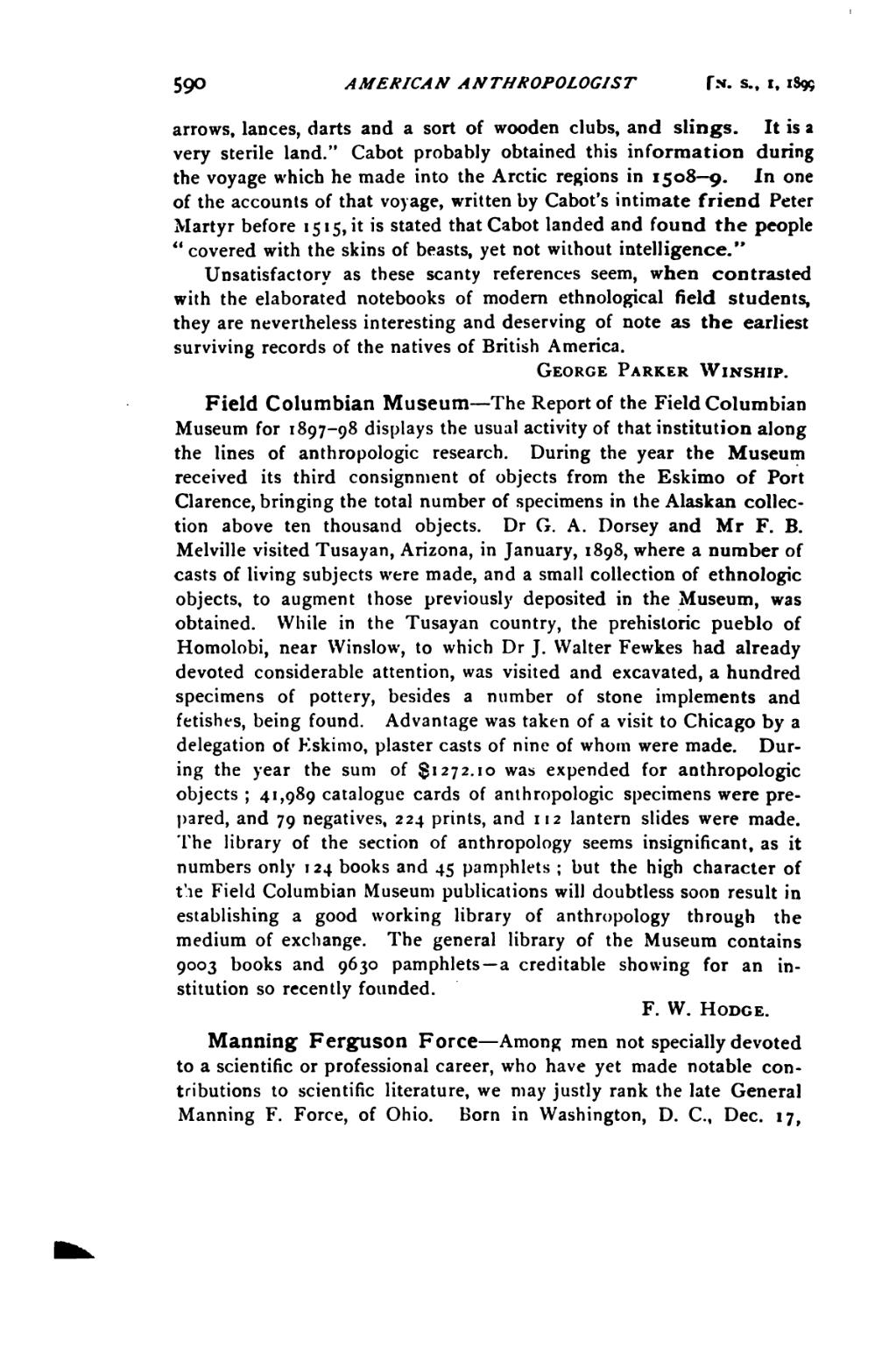590 AMERICAN ANTHROPOLOGIST fx. s., I, 1899
arrows, lances, darts and a sort of wooden clubs, and slings. It is a very sterile land." Cabot probably obtained this information during the voyage which he made into the Arctic regions in 1508–9. In one of the accounts of that voyage, written by Cabot's intimate friend Peter Martyr before 1515.it is stated that Cabot landed and found the people "covered with the skins of beasts, yet not without intelligence."
Unsatisfactory as these scanty references seem, when contrasted with the elaborated notebooks of modern ethnological field students, they are nevertheless interesting and deserving of note as the earliest surviving records of the natives of British America.
Field Columbian Museum—The Report of the Field Columbian Museum for 1897–98 displays the usual activity of that institution along the lines of anthropologic research. During the year the Museum received its third consignment of objects from the Eskimo of Port Clarence, bringing the total number of specimens in the Alaskan collection above ten thousand objects. Dr G. A. Dorsey and Mr F. B. Melville visited Tusayan, Arizona, in January, 1898, where a number of casts of living subjects were made, and a small collection of ethnologic objects, to augment those previously deposited in the Museum, was obtained. While in the Tusayan country, the prehistoric pueblo of Homolobi, near Winslow, to which Dr J. Walter Fewkes had already devoted considerable attention, was visited and excavated, a hundred specimens of pottery, besides a number of stone implements and fetishes, being found. Advantage was taken of a visit to Chicago by a delegation of Eskimo, plaster casts of nine of whom were made. During the year the sum of $1272.10 was expended for anthropologic objects; 41,989 catalogue cards of anthropologic specimens were prepared, and 79 negatives, 224 prints, and 112 lantern slides were made. The library of the section of anthropology seems insignificant, as it numbers only 124 books and 45 pamphlets; but the high character of the Field Columbian Museum publications will doubtless soon result in establishing a good working library of anthropology through the medium of exchange. The general library of the Museum contains 9003 books and 9630 pamphlets—a creditable showing for an institution so recently founded.
Manning Ferguson Force—Among men not specially devoted to a scientific or professional career, who have yet made notable contributions to scientific literature, we may justly rank the late General Manning F. Force, of Ohio. Born in Washington, D. C, Dec. 17,
